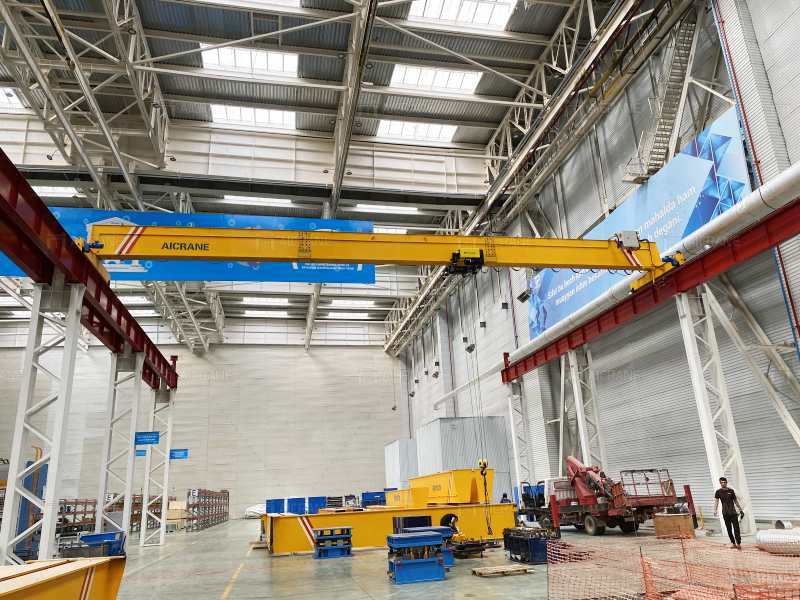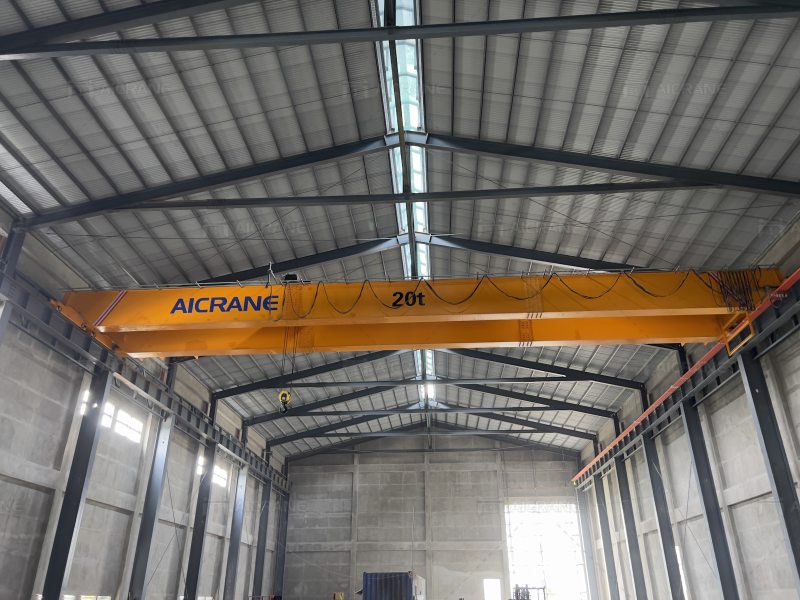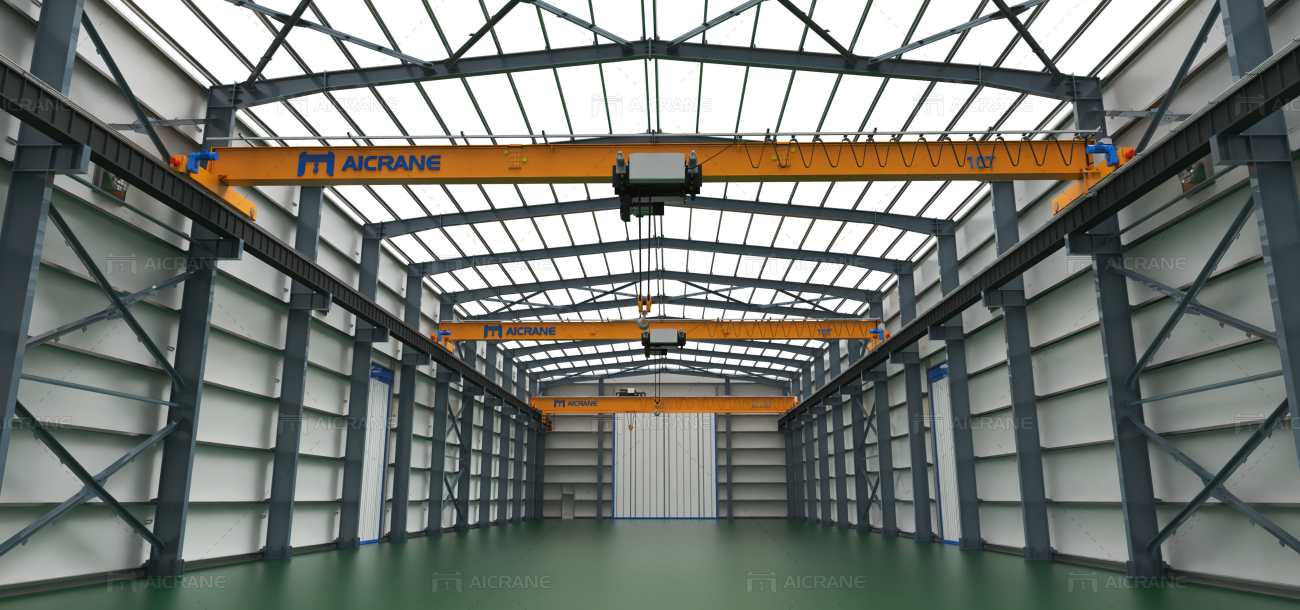Overhead lifting cranes are a cornerstone of heavy construction projects, providing the muscle and precision required to move massive loads with efficiency and safety. From building bridges to constructing skyscrapers, overhead cranes help streamline construction processes, ensuring that heavy materials are transported quickly, accurately, and safely. This article explores the role of overhead lifting cranes in heavy construction, the benefits they bring, and some considerations for optimizing their use on job sites.

The Role of Overhead Lifting Cranes in Heavy Construction
Overhead lifting cranes, also known as bridge cranes, are designed to move heavy objects across horizontal and vertical planes within a defined workspace. These cranes typically consist of a hoist on a trolley, which moves along a horizontal bridge structure supported by one or two runway beams. They are widely used in industries like manufacturing, warehousing, and, notably, construction.
In construction projects, overhead cranes play a critical role by:
- Transporting Heavy Loads: Moving materials such as steel beams, concrete blocks, and rebar is a primary function. The strength of overhead cranes allows workers to move these heavy items effortlessly, helping keep projects on schedule.
- Precision Lifting and Placement: Certain construction tasks, like installing steel frameworks, require precision and careful placement. Overhead cranes enable this accuracy, ensuring that components align correctly. This precision reduces the likelihood of mistakes, saving both time and money.
- Improving Workflow Efficiency: With an overhead crane, construction sites operate more efficiently. By quickly moving heavy loads, heavy duty overhead cranes reduce the need for additional equipment and personnel, streamlining the overall workflow and allowing other tasks to proceed without delay.
- Enhancing Safety on Site: Overhead cranes are designed to handle the weight of massive objects, which means fewer manual laborers need to work near these materials. This reduces the risk of injuries and creates a safer environment, which is critical on construction sites where safety is always a top priority.

Key Benefits of Overhead Lifting Cranes
The benefits of using overhead lifting cranes in construction are multifold, encompassing productivity, safety, and cost savings. Here are some specific advantages:
- Increased Load Capacity and Reach: Overhead cranes are built to handle very high capacities, with some models capable of lifting hundreds of tons. This makes them invaluable in heavy construction where materials like steel beams and concrete segments can weigh thousands of pounds.
- Reduced Labor Costs: By reducing the number of workers required for heavy lifting tasks, overhead cranes help minimize labor costs. Fewer workers are needed for load handling, allowing teams to focus on specialized tasks and reducing the risk of overexertion injuries.
- Enhanced Efficiency and Speed: Overhead cranes streamline operations by enabling materials to be moved quickly across construction sites. This helps meet tight deadlines, especially on large-scale projects where the timing of each stage is critical.
- Environmental Adaptability: Modern overhead cranes can be customized to fit specific environmental conditions, such as confined spaces, extreme temperatures, or high wind zones. This adaptability makes them ideal for diverse construction settings, from urban high-rises to offshore platforms.

Considerations for Using Overhead Lifting Cranes in Construction
While overhead cranes offer significant benefits, there are some essential considerations to maximize their effectiveness and ensure safe operation:
- Site Preparation and Crane Installation: Proper site preparation is critical before installing an overhead crane. This includes ensuring there’s enough space for the crane and that the structure supporting the crane can handle the weight. When installing the crane, precision is vital, and installation must be performed by trained professionals.
- Operator Training: Only qualified and trained personnel should operate overhead cranes. Proper training ensures that operators know the crane’s capabilities, limitations, and safety protocols, which is essential for avoiding accidents and maximizing crane efficiency.
- Regular Maintenance and Inspection: Routine maintenance is key to preventing breakdowns and extending the crane’s lifespan. Maintenance tasks might include checking cables, ensuring the crane’s hoists and trolleys are in good condition, and inspecting the structural integrity of the bridge and runways. Regular inspections also help meet OSHA standards and ensure that the crane is safe for use.
- Load Management and Weight Distribution: Overloading an overhead crane can result in catastrophic failure. Workers should always be aware of the crane’s load capacity and ensure proper load distribution. Using load-monitoring systems can also help avoid overloading.
- Adapting to Project-Specific Needs: Construction projects vary in complexity and requirements, so selecting the right crane configuration is essential. Some projects may benefit from single girder cranes, while others may need double-girder setups or custom solutions to match the project’s specific demands.
The Future of Overhead Lifting Cranes in Construction
As technology advances, overhead lifting cranes are becoming even more valuable in the construction industry. Integration with IoT and smart systems enables real-time monitoring and predictive maintenance, reducing downtime and enhancing efficiency. Automated cranes are also entering the market, allowing for even more precision and reducing human error.
Conclusion
Overhead lifting cranes are invaluable in heavy construction projects, delivering the strength, reach, and precision required to handle the industry’s most demanding tasks. By enhancing efficiency, promoting safety, and reducing labor costs, overhead cranes support faster project completion and improved profitability. As the construction industry continues to evolve, the role of overhead lifting cranes will only become more critical, driving innovation and setting new standards for efficiency and safety on job sites worldwide.
